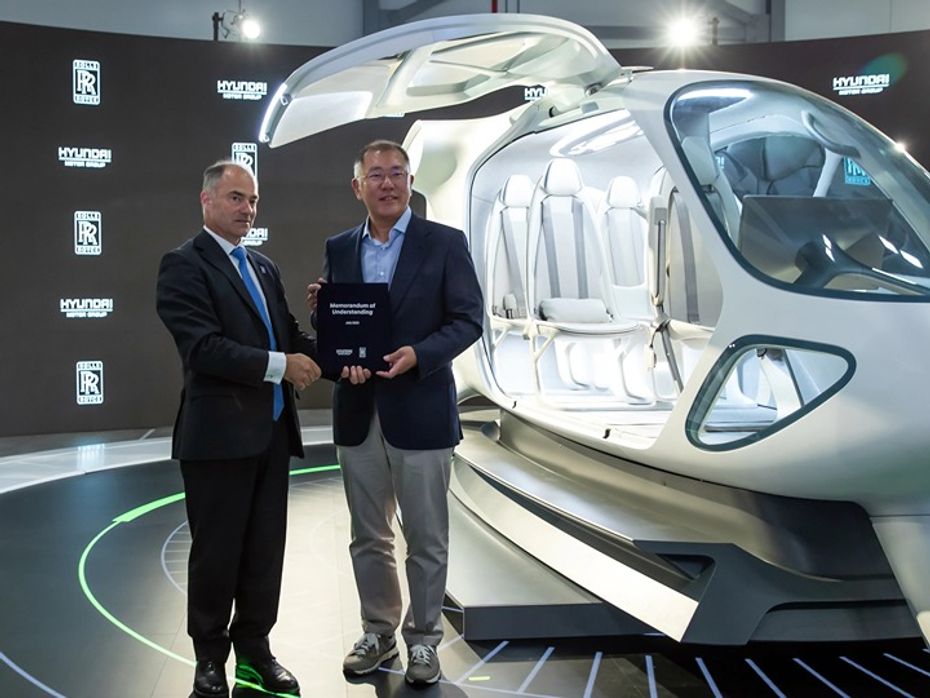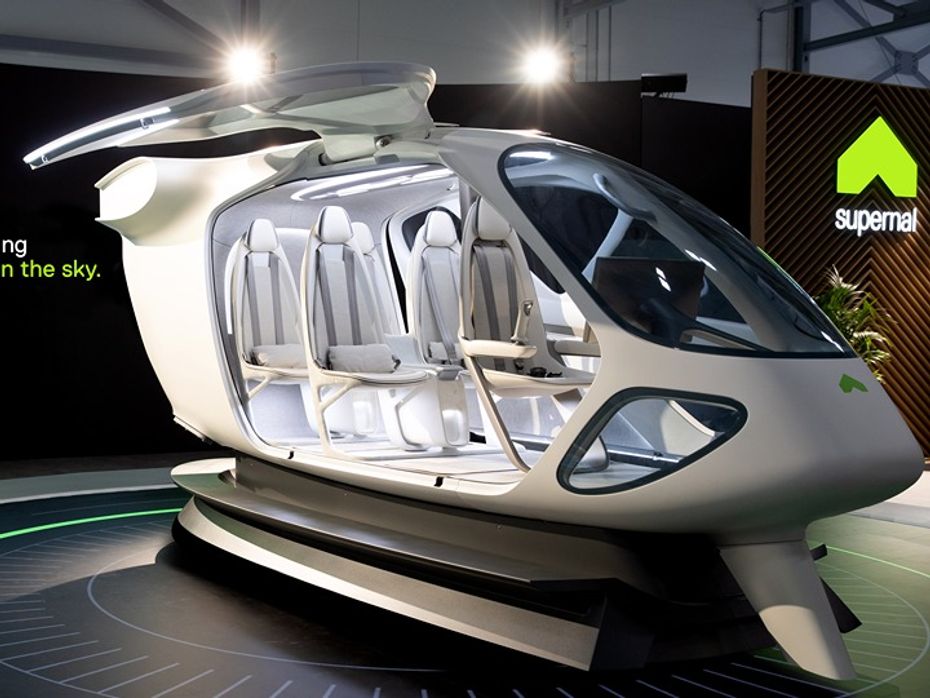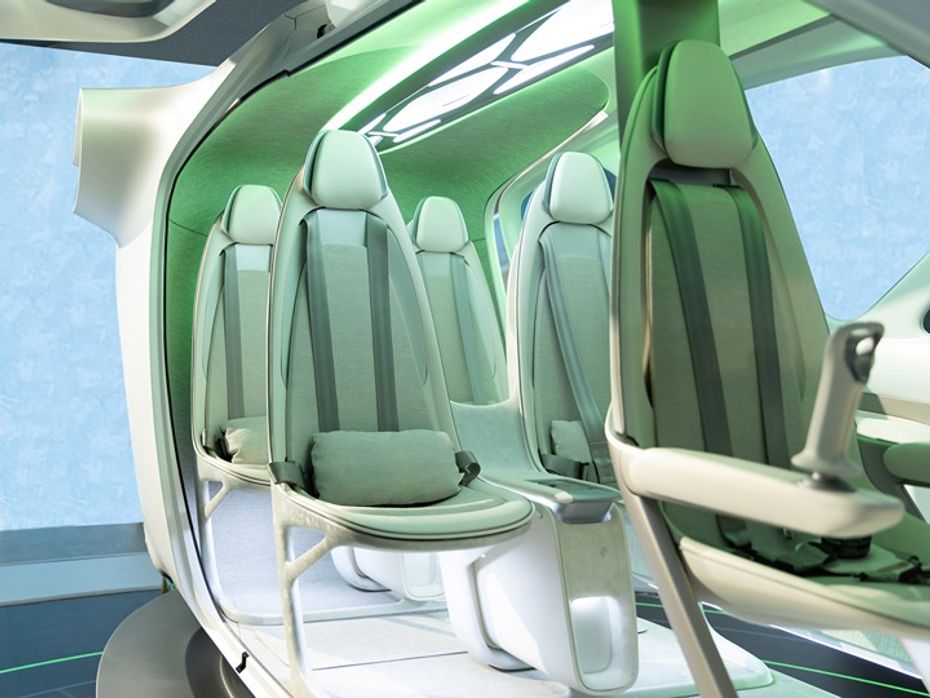
Hyundai Venue: A Steed For Every Need
- Nov 18, 2024
- Views : 18322


eVTOL cabin concept revealed at Farnborough Airshow in the UK.
Hyundai has renamed its urban air mobility division Supernal.
First flying air taxi service set to begin in 2028 in the US.
Hyundai has paired up with jet engine builder Rolls-Royce to build hydrogen fuel cell-based propulsion systems for its upcoming urban and regional air mobility vehicles (UAM and RAM, respectively). For now, Hyundai has revealed a concept cabin for its vertical takeoff and landing (eVTOL) air taxi. We’ll get to see a demonstration of the flying hydrogen electric vehicles (EVs) as early as 2025, and the first UAM services will be launched in the US in 2028.
Hyundai’s cutting edge air taxi initiative is built on the premise of using low or zero emissions vehicles for intra-city and inter-city travel. With Rolls-Royce’s expertise, the carmaker will develop a novel propulsion system, likely using a set of electric motor propellers that draw power from an on-board hydrogen fuel cell.

Using a fuel cell eliminates the need to carry massive, heavy battery packs and allows the air mobility EVs to be scaled up for inter-city and intra-city travel using different sized hydrogen tanks and fuel cells. It also makes refuelling a breeze compared with fully electric vehicles.

The aviation industry accounts for a significant chunk of global greenhouse gas emissions, and just like other forms of transportation, it is striving to reduce its emissions wherever possible. Battery-electric powertrains are not practical for aircraft due to the heavy weight of battery packs, but fuel cell technologies are being developed for aviation use by companies such as Zero Avia.
Apart from fuel cells, Hydrogen can also be used as a combustion fuel in jet engines. Hydrogen jet engines and sustainable jet fuel are being tested in real-world conditions on aircraft. We could see these alternative propulsion systems in commercial flights in the coming years.

Hyundai promises a demonstration of the novel fuel-cell aircraft in 2025, and the first short-range urban mobility flights are expected in 2028. Initially, Hyundai’s service will be limited to select cities in the US. The carmaker plans to begin regional mobility services using longer-range flying EVs in the 2030s.
Also read:
Hyundai Motors Announces Uber Partnership, Shows Flying Car Concept At CES 2020
Rolls-Royce Spirit of Innovation Electric Aircraft Claims Fastest Electric Vehicle Record

Hyundai’s air taxis will present an all-new form of city transportation that hasn’t been seen before. It’ll be interesting to see their hydrogen-powered drivetrain in action, especially for regional flights that are currently serviced solely by jet or propeller aircraft. Hyundai will still have to contend with existing challenges for hydrogen – its mass-scale production, transportation and storage. But we expect more innovative solutions to come up in these domains as well in the coming years.

Hyundai Venue: A Steed For Every Need

Hyundai Creta N Line: Sporty Upgrades Done Right

Hyundai Venue N Line: Taken To The Next Level Of Sportiness

What Makes The Hyundai Exter CNG The Complete Small SUV?

Hyundai Creta Level-2 ADAS Explained, Perfect For Indian Road...

Hyundai Exter: Welcome To The New World Of Thrills And Technology

Hyundai Exter: An Year Long Ownership Experience That Left Us Wanting...

Hyundai Creta Electric REVEALED Ahead Of Auto Expo 2025! Here’s...

Hyundai Creta Electric Vs Tata Curvv EV: Range, Charging, And...

Mahindra BE 6e and XEV 9e: Unleashing An Electric Revolution
India's largest automotive community
 2025 Land Rover Defender Is Here; Check Out What Is New
2025 Land Rover Defender Is Here; Check Out What Is New
 Auto Expo 2025: BYD Sealion 7 Will Debut In India At The Expo Ahead Of Its Launch By March 2025
Auto Expo 2025: BYD Sealion 7 Will Debut In India At The Expo Ahead Of Its Launch By March 2025
 Performance Cars Expected To Be Showcased At The Auto Expo 2025
Performance Cars Expected To Be Showcased At The Auto Expo 2025
 Renault Has Confirmed The New-gen Kiger And Triber For India Launch In 2025, Alongside A New SUV For 2026!
Renault Has Confirmed The New-gen Kiger And Triber For India Launch In 2025, Alongside A New SUV For 2026!
 Toyota Camry
Rs. 48.00 Lakh
Toyota Camry
Rs. 48.00 Lakh
 Honda Amaze
Rs. 7.99 Lakh
Honda Amaze
Rs. 7.99 Lakh
 Audi Q7
Rs. 88.66 Lakh
Audi Q7
Rs. 88.66 Lakh
 Mahindra XEV 9e
Rs. 21.90 Lakh
Mahindra XEV 9e
Rs. 21.90 Lakh
 Mahindra BE 6
Rs. 18.90 Lakh
Mahindra BE 6
Rs. 18.90 Lakh